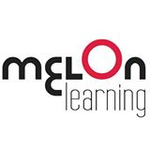Description

Pathwright

Engrade
Comprehensive Overview: Pathwright vs Engrade
To provide a comprehensive overview of Pathwright, Engrade, and Melon LMS, let's examine each platform regarding their primary functions, target markets, market share, user base, and key differentiating factors.
Pathwright
a) Primary Functions and Target Markets
- Primary Functions: Pathwright is an online learning platform designed to offer a complete solution for creating, teaching, and selling online courses. It provides tools for course creation, content delivery, learner management, and community engagement, all in a cohesive system.
- Target Markets: Its target market includes educators, trainers, and organizations looking to deliver structured and interactive online learning experiences. This includes schools, universities, businesses, and independent educators.
b) Market Share and User Base
- Market Share: Pathwright is a more niche product compared to larger LMS platforms. It is known for its intuitive design and flexibility, attracting a dedicated but smaller user base.
- User Base: Predominantly, it serves small to mid-sized organizations and individual educators seeking a well-designed platform for delivering high-quality learning experiences.
c) Key Differentiating Factors
- Design and User Experience: Pathwright emphasizes an intuitive and aesthetically pleasing design, focusing on a seamless user experience for both educators and learners.
- Community and Engagement Tools: It provides features that facilitate community building and engagement, which are central to its platform philosophy.
Engrade
a) Primary Functions and Target Markets
- Primary Functions: Engrade is primarily focused on K-12 education, offering tools for grade management, attendance tracking, assessments, and parent-teacher communication. It integrates various educational tools and resources into a single interface.
- Target Markets: The main target market is K-12 educational institutions, including teachers, administrators, and parents who need an efficient way to manage student information and track academic performance.
b) Market Share and User Base
- Market Share: Engrade was a notable player particularly in the K-12 sector before being acquired by McGraw-Hill Education. Its integration with larger educational infrastructures expanded its reach.
- User Base: It was widely adopted in the United States K-12 schools for its comprehensive administrative and educational tools.
c) Key Differentiating Factors
- Integration with Educational Resources: Strong integration with educational content and tools provided by McGraw-Hill Education.
- K-12 Focus: Tailored specifically to the needs of K-12 education, offering functionalities like attendance and grade tracking that cater specifically to this market.
Melon LMS
a) Primary Functions and Target Markets
- Primary Functions: Melon LMS is a full-featured learning management system that supports content creation, course delivery, learner management, reporting, and analytics. It offers customization and scalability for organizational needs.
- Target Markets: Its target markets are corporations, government institutions, and educational providers needing a scalable solution for employee training, professional development, or educational programs.
b) Market Share and User Base
- Market Share: Melon LMS is a competitor in the corporate and professional training segment. It is not as large as top-tier LMS providers but has carved out a presence in niche areas requiring customizable LMS solutions.
- User Base: Primarily adopted by enterprises and organizations looking for a customizable and scalable LMS platform capable of integrating with existing workflows.
c) Key Differentiating Factors
- Customizability and Integration: Strong focus on customization and integration with other business tools, which is essential for corporate clients.
- Scalability: Designed to scale effectively with the needs of large enterprises and diverse organizational structures.
Comparative Analysis
- Pathwright stands out with its focus on design and user experience, catering to educators who value engagement and community building in online learning environments.
- Engrade is tailored for the K-12 educational segment with rich integration of administrative and educational content tools, especially before its acquisition by McGraw-Hill.
- Melon LMS excels in customizability and scalability, appealing primarily to corporate users who need tailored solutions that can integrate seamlessly into broader business systems.
Overall, the choice among these platforms depends significantly on the specific needs of the organization or individual, whether they are looking for advanced design, K-12 integration, or corporate scalability and customization.
Contact Info

Year founded :
2012
+1 864-990-2065
Not Available
United States
http://www.linkedin.com/company/pathwright

Year founded :
2004
+1 800-305-1367
Not Available
United States
http://www.linkedin.com/company/engrade
Feature Similarity Breakdown: Pathwright, Engrade
When examining a selection of learning management systems (LMS) like Pathwright, Engrade, and Melon LMS, it's crucial to identify their core features, user interface design distinctions, and any unique characteristics that may set one apart from the others. Based on typical LMS functionality and available information:
a) Core Features in Common
Pathwright, Engrade, and Melon LMS generally provide several functionalities central to learning management systems:
-
Course Management: All three platforms offer the ability to create, edit, and manage course content, accommodating multimedia content, assignments, quizzes, and other learning materials.
-
Assessment Tools: These LMS platforms provide tools to create quizzes and tests, automate grading processes, and track student performance.
-
Reporting and Analytics: They feature reporting tools to help educators and administrators monitor student progress and engagement, potentially offering insights into learning outcomes.
-
Communication Tools: Pathwright, Engrade, and Melon LMS support various communication methods between instructors and students, such as messaging systems, announcements, or forums.
-
User Management: These systems offer comprehensive user management features, allowing for the easy addition and removal of students and teachers and setting diverse permission levels.
b) User Interface Comparison
Pathwright is known for its clean, intuitive, and user-friendly interface that emphasizes the ease of course building with a drag-and-drop lesson builder. The focus is on a visually appealing design that offers a straightforward navigation experience.
Engrade traditionally offers a more straightforward interface, with a no-frills approach that can sometimes feel dated compared to more modern platforms. It emphasizes functionality and ease of use without overwhelming users with excessive visual components.
Melon LMS emphasizes visual customization, allowing users to brand the platform to match institutional aesthetics. It combines modern design elements with a structured layout to ensure intuitive navigation for both educators and students.
c) Unique Features
-
Pathwright: A standout feature of Pathwright is its emphasis on instructional design, enabling non-linear learning paths. This flexibility allows educators to offer students the option to choose their learning path, fostering a more personalized learning experience.
-
Engrade: Engrade, traditionally used in K-12 settings, integrates closely with school district databases to provide more seamless management of classroom grades and standardized testing data. It is designed to integrate more with traditional K-12 educational structures than higher education or corporate environments.
-
Melon LMS: Melon LMS offers robust social learning features, including forums and social media-like capabilities that promote collaborative learning experiences. Additionally, it provides extensive customization options that allow it to be adapted for different industries and training purposes outside traditional educational settings.
In summary, while all three platforms share fundamental LMS features, their interfaces and unique functionalities differ, targeting different user needs ranging from personalized learning paths and traditional educational integrations to cross-industry adaptability and robust social learning elements.
Features

Interactive Learning Experience
Customization and Branding
Integration and Support
Course Creation and Management
Analytics and Reporting

Gradebook Management
Attendance Tracking
Student Communication
Assignments and Assessments
Best Fit Use Cases: Pathwright, Engrade
Here's a breakdown of the best fit use cases for Pathwright, Engrade, and Melon LMS, including their suitability for different industries and company sizes:
a) Pathwright
Use Cases:
- Educational Institutions: Pathwright is ideal for schools, colleges, and universities looking to create an interactive, online learning environment. Its ease of course creation and comprehensive tracking features make it suitable for formal education settings.
- Professional Training Organizations: Companies or organizations that specialize in professional training, workshops, or certifications will benefit from its intuitive design and customizable course paths.
- Corporate Training: Businesses seeking to implement ongoing employee development programs can use Pathwright to deliver various training modules in a flexible manner.
Industry Verticals and Size:
- Particularly effective for medium to large educational institutions due to its ability to handle complex courses and diverse student groups.
- Suitable for corporate HR and training departments in mid-sized to large enterprises focused on skill development.
b) Engrade
Use Cases:
- K-12 Schools: Engrade is specifically tailored for K-12 education environments, offering robust gradebook and assessment tools.
- Administrators and Teachers: It provides educators with detailed student performance analytics, helping them to better manage classroom activities and communication.
- Integration with Classroom Tools: Schools already using various educational technologies can leverage Engrade’s ability to integrate with existing tools and streamline processes.
Industry Verticals and Size:
- Best for small to medium-sized K-12 institutions that need a comprehensive solution for classroom management and grading.
- Useful for schools wanting to enhance teacher and parent communication and engagement.
c) Melon LMS
Use Cases:
- Corporate Learning and Development: Melon LMS is designed for corporate environments, focusing on enhancing employee learning experiences.
- Content-Driven Organizations: Businesses that require flexibility and scalability in content delivery can utilize Melon LMS to manage diverse learning resources and content.
- Remote and Hybrid Workforces: Companies with geographically distributed teams benefit from Melon LMS’s ability to facilitate remote learning and development.
Industry Verticals and Size:
- Suitable for large enterprises across various sectors like technology, finance, and healthcare due to its scalable features and support for diverse content types.
- Effective for medium to large companies with robust L&D programs needing detailed analytics and reporting.
d) Catering to Different Industry Verticals or Company Sizes
- Pathwright is versatile across both educational and corporate settings but excels in environments that prioritize interactive and structured learning paths.
- Engrade’s strength is rooted in the K-12 education sector, serving small to medium-sized schools that require integrated academic and administrative tools.
- Melon LMS is well-suited for larger corporations with a focus on flexibility, scalability, and integration with business operations, making it ideal for companies with comprehensive L&D requirements.
Pricing

Pricing Not Available

Pricing Not Available
Metrics History
Metrics History
Comparing teamSize across companies
Conclusion & Final Verdict: Pathwright vs Engrade
When evaluating learning management systems (LMS) like Pathwright, Engrade, and Melon LMS, it's essential to consider various factors such as functionality, ease of use, pricing, and specific needs of the institution or user. Here's a breakdown of each product, helping to conclude which offers the best overall value:
a) Best Overall Value:
Considering all factors, Pathwright seems to offer the best overall value. It combines a user-friendly interface with robust features that cater to a broad audience, from individual educators to larger institutions. Its emphasis on interactive and customizable learning pathways can greatly enhance the educational experience.
b) Pros and Cons:
Pathwright:
- Pros:
- User-friendly interface with intuitive design.
- Highly customizable learning pathways.
- Strong community and support resources.
- Flexible pricing plans catering to various needs.
- Cons:
- May have a learning curve for users unfamiliar with LMS platforms.
- Some advanced features may require additional costs.
Engrade:
- Pros:
- Comprehensive grade management system.
- Integrates well with various educational technologies.
- Offers tracking and analytics that can improve student performance.
- Cons:
- Primarily known for gradebook capabilities, might not provide as comprehensive LMS features.
- Limited customization compared to other modern LMS platforms.
Melon LMS:
- Pros:
- Cost-effective solution, especially for smaller institutions.
- Strong focus on delivering structured eLearning content.
- Simple interface suitable for users not familiar with technology.
- Cons:
- Limited scalability for larger organizations.
- Might lack some advanced features offered by competitors.
c) Recommendations:
-
Pathwright is recommended for educators and institutions looking for a versatile and engaging LMS. It's particularly beneficial for those who want to create more personalized learning experiences and require a platform that grows with their needs.
-
Engrade is suitable for school systems primarily focused on grade management and looking for seamless integration with existing educational tools. If grading and administrative functions are your primary concern, Engrade's features might be highly advantageous.
-
Melon LMS might be ideal for smaller organizations or those seeking a straightforward solution without needing extensive features. Its cost-effectiveness is a significant attraction for budget-conscious users.
Users deciding between these options should evaluate their specific needs, considering the size of their institution, the importance of advanced features, and budget constraints. It's also wise to take advantage of free trials or demos, if available, to get a practical sense of each platform's usability and suitability.
Add to compare
Add similar companies




